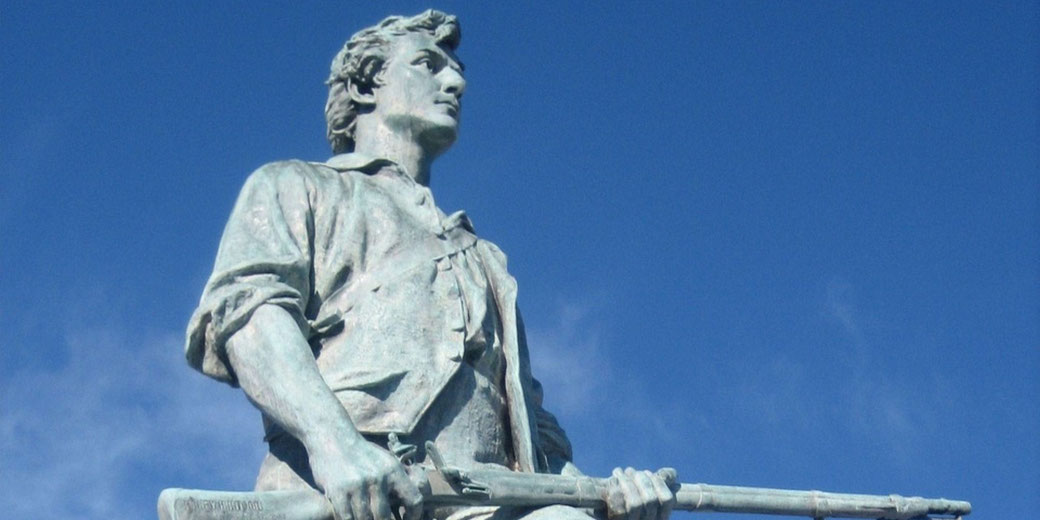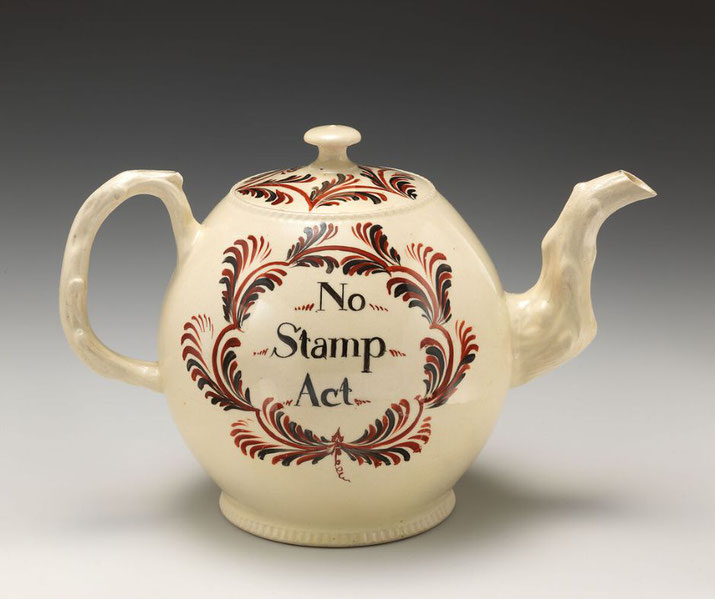What were the causes of the American Revolution?

The American Revolution was a time of great upheaval in the history of the United States. Taxation without representation, restrictions on trade, and the quartering of British soldiers fueled resentment among colonists who felt their rights were being violated.
For years, these grievances escalated, creating a rift between the colonies and the British government. In response to these injustices, the colonists organized protests, boycotts, and even acts of rebellion.
As diplomatic efforts failed, the colonies moved closer to open conflict with the world's most powerful empire, leading to the Revolutionary War.
European colonisation of North America
Ever since Christopher Columbus landed in the Americas in 1492, various European powers sought to expand their empires into the New World.
To do this, countries like Spain, France, and England sent out colonists, to both seize land from the Indigenous peoples and to establish new colonies that would generate wealth for their home countries.
Competition between European powers over who could take the most profitable land fueled early expansion in North America.
The Spanish were the first to create a colony in 1565 at St. Augustine in Florida.
However, the Spanish crown remained more focused on the conquest of Central America, which was producing unprecedented quantities of gold.
As a result, their expansion further north was limited. Their European rival, England, would attempt to capitalise on this.
In 1587 an expedition sponsored by Sir Walter Raleigh founded the settlement of Roanoke in North Carolina, but this mysteriously disappeared in 1590.
The Virginia Company of London then built Jamestown, Virginia in 1607.
Eventually, the English had settlements from Maine to Georgia. Later they also took over the Dutch colonies, including New Amsterdam in 1664, which was renamed New York the following year after the King of England's brother, the Duke of York.
The French founded Quebec in Canada in 1608. However, France was preoccupied with wars in Europe and the expansion of their colonies in North America moved much slower than England's.
Despite this, the French colonies to the north remained a key threat to the British colonies.
It is important to note that all of these colonies were created at the expense of the various Native American peoples who already lived in the area.
In many cases, the Europeans simply took the land without understanding the cultures they were supplanting.
The local inhabitants often resisted European expansion into their land, but their efforts were undermined by the superiority of European weaponry and the sudden high death toll caused by new diseases introduced by the colonists.
By 1650, England had established the strongest presence along the eastern coast of North America.
The various new colonies quickly invested in growing profitable agricultural crops to sell back to Britain, such as tobacco.
Within 100 years, an estimated 2 million people lived in Great Britain's 13 North American colonies of Massachusetts, New Hampshire, Rhode Island, Connecticut, New York, Pennsylvania, Delaware, New Jersey, Maryland, Virginia, North Carolina, South Carolina, and Georgia.
Longterm cause: Colonial wars
Many of the causes of the eventual war between the American colonies and Britain stemmed from the fact that North American colonies were governed by European powers despite being thousands of miles away.
In practice, this meant that people in the Americas were involved in wars and economic problems that they knew very little about.
A good example of this was the outbreak of the Nine Years War in Europe, which occurred between 1689–97.
This war was fought to limit the growing power of France. A range of other European nations including the Holy Roman Empire, the Dutch Republic, England, and Spain allied together to fight against French interests.
As a result, the British and French colonies in North America were expected to also be fighting each other.
However, since neither colony had much of an army, both sides recruited Native American peoples to fight with them.
Despite various battles between the two sides, few gains were achieved in North America.
A similar thing occurred during the Seven Years' War, which took place between 1756 and 1763.
This was another European conflict between Great Britain and France which involved the colonies.
Once more, Native Americans were recruited on both sides and, as a result, it is usually referred to as the French and Indian War in North America.
This time, Great Britain was the clear victor in the conflict, and they took possession of France’s North American colonies east of the Mississippi River in 1763.
Despite being the victor in the war and having gained new territories, Britain was in serious financial trouble.
The war had been an incredibly expensive exercise and the British parliament was in debt.
The politicians in London debated about ways to raise more money to reduce their debt and the solution chose was to increase taxes.
Longterm cause: New taxes
Taxes were a fee that everyday people had to pay whenever they purchased particular products.
A government could specify which products had taxes on them and how much this fee would be.
Usually, taxes were placed on luxury goods. This was because luxuries were already expensive items, which meant that people who were wealthy enough to pay for them would also be able to afford the extra fee.
However, governments usually faced resistance to taxes on common items: things that most people paid for, because poorer people could not afford to pay an additional fee.
To raise the money it needed, the British parliament introduced two new taxes on the North American colonies: the Sugar Act of 1764 and the Stamp Act of 1765.
These acts placed a fee on the purchase of specific products: sugar and a particular kind of stamped paper made in London that colonists were required to use for newspapers and legal documents.
Both of these acts were very unpopular, and, for the first time, the colonists protested, which led the parliament to cancel the Stamp Act.
What is important about this event is that it showed that there was potential for unrest in the American colonies towards political decisions they didn't like.

While the Sugar Act remained in place, it wasn't raising enough revenue to help pay the debts.
Therefore, a new range of taxes, called the Townshend Acts were introduced on the colonies in 1767.
This time taxes were placed on a wider range of products, including tea, lead, paint, paper, and glass.
The sudden increase of taxes on goods that most people were using caused an outcry among the colonists.
More protests occurred, some of which turned violent, and most people simply refused to pay.
The city of Boston became a point of particular conflict about the new taxes. Many merchants in the city decided to boycott the new taxes.
The customs officials who worked for the British government threatened to call in British soldiers to force them to pay the new fees.
These officials even took the step of seizing one merchant's ship who they thought was illegally selling goods without paying the taxes.
The people of Boston were angry at the threat of violence and the seizure of personal property and, when they heard that a customs official had killed a local teenager, a violent riot erupted on the 5th of March 1770.
Five people were killed in what became known as the Boston Massacre.
Shocked by the rapid escalation in violent protests, the British government once more changed their minds.
Most of the Townshend Acts were repealed just over three years after their introduction, but the tax on tea remained.
Short term cause: the Boston Tea Party
Then, in 1773, the British parliament introduced a new Tea Tax. This time, it was created to help save the British East India Company from financial collapse.
The British government needed the Company to help control its colony in India and proposed the new tax as a way of raising enough money to keep it going.
However, by this time, the tolerance for new taxes in the colonies was very low.
Following the failure of the Townshend Acts, many colonists started to argue that it was not fair of the British government in London to make them pay taxes if people in the colonies were not allowed to be part of the government that created these taxes.
At the time, this thought was expressed in the slogan, 'No taxation without representation'.
Here, the word 'representation' meant the ability for people in the colonies to be elected as members of the British parliament.
When word of the new Tea Tax of 1773 arrived in Boston, once more violent protests broke out in an event that has become known as the 'Boston Tea Party'.
On the 16th of December 1773, a group of protestors, called the Sons of Liberty, disguised themselves as Native Americans, and broke into a ship owned by the East India Company that was docked in Boston's harbour.
Once aboard, they threw all of the chests of tea they could find into the waters of the harbor.
When the British government learned of this, they moved to punish all of Massachusetts by introducing a new range of laws, known as the Intolerable Acts, or as the Coercive Acts, which placed restrictions on the colonists' civil liberties.
They did this by closing Boston’s port to all trade and made it illegal for the people to hold town meetings or assemble to protest.
The twelve other British colonies were shocked by these bans and feared that this might also happen to them if they continued to resist new taxes.
Concerned that they were running out of options, delegations from all 13 colonies decided to meet together in Philadelphia at an event called the First Continental Congress in 1774.
At this meeting, they considered the best response to the crisis. The delegates sent demands to Britain to remove the Intolerable Acts.
Importantly, they also agreed on a boycott of British goods and began forming colonial militias.
In response to this, the parliament simply sent more soldiers in a clear sign that enforcement of the new laws was more important.
It was clear by this point that armed conflict was inevitable and the colonists began preparing to resist the British troops that were being sent to North America.
What do you need help with?
Download ready-to-use digital learning resources
Copyright © History Skills 2014-2025.
Contact via email
With the exception of links to external sites, some historical sources and extracts from specific publications, all content on this website is copyrighted by History Skills. This content may not be copied, republished or redistributed without written permission from the website creator. Please use the Contact page to obtain relevant permission.





